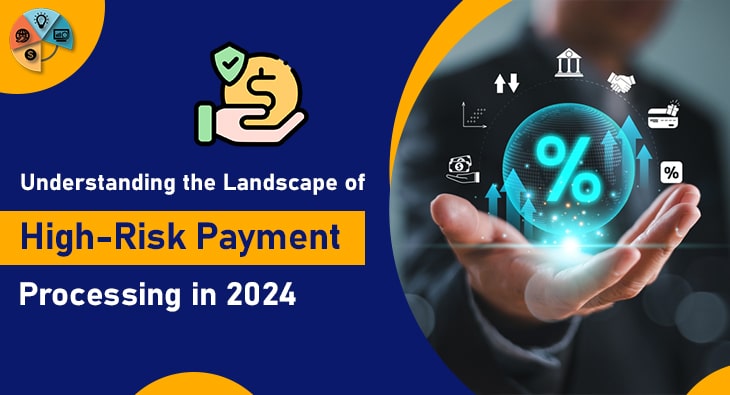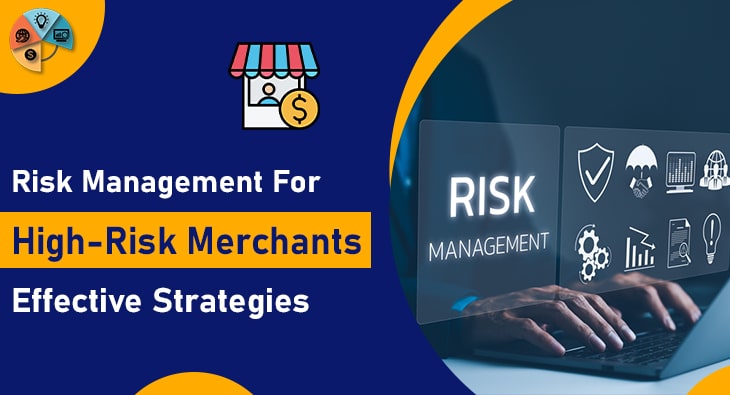As we move into 2024, the world of high-risk payment processing is undergoing significant transformations that are reshaping how businesses navigate financial transactions. Factors such as regulatory changes, advancements in technology, and evolving consumer behaviors are all contributing to this complex landscape.
High-risk payment processing in 2024 presents unique challenges and opportunities, particularly for industries like e-commerce, online gaming, and adult services, which often face stricter scrutiny from financial institutions. Understanding the nuances of this environment is crucial for business owners who rely on secure and efficient payment solutions.
By keeping abreast of trends and best practices, companies can better position themselves to thrive in this high-stakes arena, ensuring they can accept payments with confidence while minimizing risks associated with chargebacks and fraud.
This blog post aims to provide valuable insights into the current state of payment processing in 2024, equipping readers with the knowledge needed to navigate this dynamic field effectively.
Identifying High-Risk Industries and Merchants
Certain industries are inherently labeled as high-risk due to factors such as higher-than-average chargeback rates, regulatory scrutiny, and the potential for fraudulent activities. In 2024, these high-risk sectors include e-commerce, online gaming, adult entertainment, subscription services, and travel agencies.
E-commerce businesses face risks from fraudulent transactions and chargebacks, often requiring robust security measures. Online gaming and adult entertainment encounter similar challenges, with the added complexity of age verification and legal compliance across various jurisdictions. Subscription services, while popular, frequently deal with disputes over recurring billing and cancellations, elevating their risk profile.
Travel agencies must navigate issues like fluctuating regulations and last-minute cancellations, which can complicate payment processing. Identifying these industries helps payment processors tailor their services to meet the unique needs of high-risk Understanding the specific risks associated with each industry is essential for merchants and payment processors alike, ensuring they can implement effective strategies to mitigate potential issues. Regulatory changes are significantly impacting high-risk payment processing in 2024, requiring businesses to stay vigilant and adaptable. With an increased focus on consumer protection and data security, new regulations mandate stricter compliance measures for high-risk industries. The introduction of enhanced Know Your Customer (KYC) and Anti-Money Laundering (AML) protocols is now a prerequisite, demanding that businesses implement rigorous identity verification and transaction monitoring processes. Additionally, the tightening of General Data Protection Regulation (GDPR) and California Consumer Privacy Act (CCPA) guidelines necessitates heightened data handling practices, affecting how businesses collect, store, and manage customer information. Payment processors must also navigate evolving guidelines set forth by major credit card networks like Visa and Mastercard, which continually update their rules to mitigate fraud and ensure safer transactions. Non-compliance can lead to hefty fines, increased scrutiny, or even the termination of merchant accounts, making adherence to these regulations not just a legal obligation but a critical business priority. To stay compliant, high-risk merchants should invest in continuous education and employ dedicated compliance teams to keep up with regulatory changes. This proactive approach helps mitigate risks and build trust with financial institutions and customers alike. In 2024, advancements in fraud detection and prevention technologies are proving to be game-changers for high-risk payment processing. Machine learning and artificial intelligence are at the forefront, enabling real-time analysis of transaction patterns to identify anomalies that could indicate fraudulent activities. These technologies are capable of adapting to new fraud tactics by continuously learning from vast datasets, making them more effective over time. Behavioral biometrics is another cutting-edge technology gaining traction, using patterns in user behavior, such as typing speed and navigation habits, to authenticate transactions and detect potential fraud. Additionally, tokenization and end-to-end encryption are becoming standard practices, replacing sensitive card information with unique tokens that are useless to fraudsters. Multi-factor authentication (MFA) is also more widely implemented, requiring multiple forms of verification before a transaction can be completed. Blockchain technology is being explored for its potential to provide immutable and transparent transaction records, further bolstering security. Payment processors are integrating these advanced tools to create more robust, multi-layered security frameworks that can proactively address the ever-evolving threats in the high-risk payment landscape. By leveraging these technological advancements, businesses can enhance their fraud detection capabilities and reduce the risk of financial losses. Cryptocurrency is increasingly becoming a vital tool in high-risk payment processing in 2024, offering unique benefits that traditional financial systems often lack. One of the key advantages of using cryptocurrencies is the decentralized nature of blockchain technology, which eliminates the need for intermediaries and reduces the risk of chargebacks. Transactions are immutable and transparent, providing a level of security and trust that is difficult to achieve with conventional payment methods. For high-risk industries, this transparency and security can significantly mitigate the risks associated with fraud and financial loss. Additionally, cryptocurrencies offer faster transaction times and lower fees compared to traditional banking systems, making them an attractive option for high-risk merchants who often face higher processing costs. The global nature of cryptocurrencies also facilitates cross-border transactions, allowing businesses to reach a wider audience without the complexities of currency conversion and international banking regulations. Furthermore, the anonymity provided by cryptocurrencies can be appealing to consumers who prioritize privacy, adding another layer of customer satisfaction. As more businesses and consumers become comfortable with digital currencies, integrating cryptocurrency payment options can provide high-risk merchants with a competitive edge, enabling them to offer more diverse and secure payment methods. Email us anytime! Email customer service 24/7 Call us anytime! Reach customer care 24/7 at +1 (727) 330-3944 Some Related Blogs
Regulatory Changes and Compliance Requirements in 2024
Advancements in Fraud Detection and Prevention Technologies

The Role of Cryptocurrency in High-Risk Payment Processing
![]()
![]()



2 thoughts on “Understanding the Landscape of High-Risk Payment Processing in 2024”
Comments are closed.